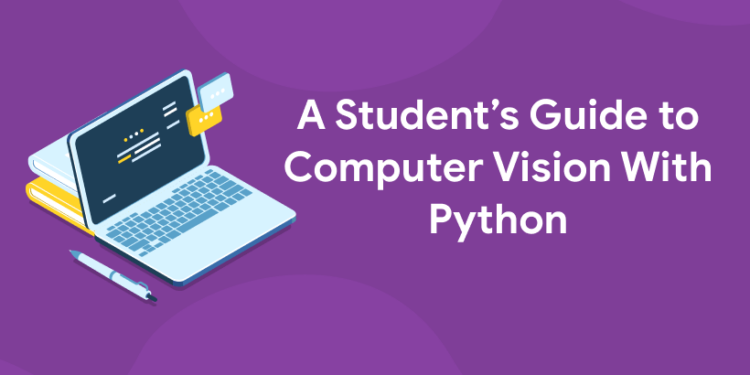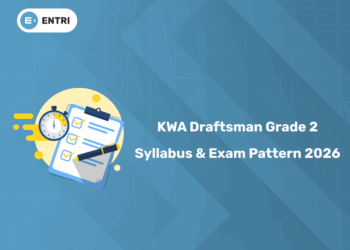Table of Contents
With the recent advances in deep learning, computer vision has become one of the hottest fields of study in computer science. Unfortunately, it can be quite daunting to start learning this field if you’re not familiar with what’s happening under the hood and how the algorithms actually work. Luckily, there are some great resources to help you get started and make your journey as smooth as possible! This article will give you 10 tips on how to learn computer vision with Python so that you can begin harnessing this technology in your own applications. Computer vision and machine learning algorithms are becoming increasingly common in our everyday lives. From computers that can recognize your face to programmatic advertising, the opportunities to apply these techniques are endless. If you’re interested in learning how to use computer vision with Python, this blog will introduce you to some of the techniques and resources you’ll need in order to do so effectively. Before you begin using Python to implement computer vision in your own projects, it’s important to understand the environment and code structure required to use the language. In this article, we’ll look at how to get started with Python and address some best practices you can use to set yourself up for success when learning how to build computer vision applications with Python.
1) What You Need
If you are brand new to computer vision, one of your first orders of business is going to be to learn about how to represent and manipulate images mathematically. To get started on that, you’ll need an image library that provides some building blocks in image manipulation. PIL (Python Imaging Library) has been around forever and works great; alternatively, scikit-image offers a higher level abstraction over PIL while Pillow brings many improvements over both. Either way, it’s best to start out with something simple and easy so you can focus on learning rather than fighting with libraries. There are also several deep learning for computer vision libraries out there such as Caffe or Theano but they tend to have steep learning curves and require significant time investment just to get things working correctly. In my opinion, starting out simple will pay off big time down the road when you finally have enough experience to appreciate these advanced frameworks.
2) An Introduction to Computer Vision
1: Which of the following data types is immutable in Python?
Before you can master computer vision, you need to first understand what computer vision is. Computer vision is a form of artificial intelligence that’s used in image processing, video analysis and biometrics. It’s also what powers machines like self-driving cars, drones and robots. At its most basic level, computer vision refers to any technology that’s capable of automatically analyzing images or videos to interpret their contents in terms of spatial attributes. Object detection, classification and segmentation are all part of computer vision as well. Now that we have a basic idea of what computer vision is all about, let’s look at some tips on how you can start learning it To begin, check out these resources: Completely Free: There are no costs involved with completing Andrew Ng’s course in machine learning and deep learning. If you want free but still high quality content, then check out MIT Open Courseware’s video lectures series on Artificial Intelligence by Professors John Guttag and Erik Brynjolfsson. The videos cover topics like natural language processing (NLP), pattern recognition and search algorithms. Paid Content: Although there are plenty of paid courses available online, one of our favorites is Deep Learning from fast AI.
Grab the opportunity to learn Python with Entri! Click Here
🚀 Start Coding Today! Enroll Now with Easy EMI Options. 💳✨
Gain expertise in Django and open doors to lucrative opportunities in web development.
Start Learning With EMI Payment Options3) Basic Image Processing
As a developer, you can use basic image processing to get more information from images. These simple functions are useful when you want to apply edits or filters to an image without having to go through a third-party editing app. Luckily, Python has built-in functions that can help you achieve these goals easily. One of those tools is PIL (Python Imaging Library). You can find PIL in your Anaconda environment under C:\Miniconda\envs\py36\lib\site-packages . Learn how it works and make sure that it is present on your computer. When using PIL, remember to copy an image into a new file; don’t try and process an existing file because it may be read-only. If you aren’t sure what type of image file you have, right click on it and select Properties to see its extension. Then search online for how to convert between formats if necessary. Another important thing to know about PIL is that all operations work best if they are applied as binary images—that means they should be converted from their original format before any other operations are applied. Use Pillow instead: If you run into problems with PIL, there is another library called Pillow that provides similar functionality but may work better across platforms.
4) What are Haar Cascades?
It can be useful to put all these ideas into practice. If you’re interested in computer vision, one of your first tasks will probably be to train a classifier: applying machine learning algorithms to a large dataset so that it can identify objects automatically. It turns out that OpenCV comes bundled with thousands of pre-made classifiers. These are known as Haar cascades, and there are many different sets available (e.g., animal faces, vehicle license plates, common gestures). The easiest way to use them is through OpenCV’s HaarClassifier library: just download and unzip your favorite cascade file, then create an instance of a HaarClassifier object (passing in an image) and call its train() method. This method takes several minutes to run on my laptop, but once it’s done, you can test your new classifier by passing in any images that were used during training and checking whether they match or not. You can even try running multiple cascades at once!
5) How Does It Work?
Let’s take a look at how we can use OpenCV to track an object. There are two parts to it: Detection and Tracking. Here is some example code (in Python) that shows you how to detect a rectangle in an image, and then track that same rectangle over time: How does it work? Let’s take a look at how we can use OpenCV to track an object. There are two parts to it: Detection and Tracking. Here is some example code (in Python) that shows you how to detect a rectangle in an image, and then track that same rectangle over time: You can check out more of our tutorials here . Happy coding! Is there something you want us to cover? Did we miss your favorite feature? Leave us a comment below or send us an email ! We’d love to hear from you. Learn more about computer vision with our free guide ! Or sign up for our newsletter and never miss another post again. With all these new features, it’s easy to get overwhelmed by everything that’s been introduced in Raspbian Stretch Lite. To help ease things along, I’ve put together a list of 10 things I think every Raspbian user should know about Stretch Lite on Raspberry Pi 3 Model B+. 1. Stretch Lite vs Raspbian Lite It may be tempting to call Stretch Lite Raspbian Lite, but don’t do it!
“Ready to take your python skills to the next level? Sign up for a free demo today!”
🚀 Start Coding Today! Enroll Now with Easy EMI Options. 💳✨
Gain expertise in Django and open doors to lucrative opportunities in web development.
Start Learning With EMI Payment Options6) Going Beyond the Basics – Recognizing Facial Expressions
It’s easy to tell if someone is smiling or frowning, but what about recognizing more subtle facial expressions? It turns out that recognizing a range of emotions isn’t just cool — it can be useful. Facial recognition algorithms can help create applications that respond to your mood and environment, as well as detect potential intruders. In an effort to make things easier for beginners, we will focus on defining facial expressions, reviewing available computer vision and machine learning libraries that include algorithms for detecting those expressions and then dive into a simple demonstration of emotion detection in images from our webcam. Along the way, you’ll learn how to apply OpenCV and dlib face-detection models using OpenCV’s built-in function haarcascade_frontalface_alt2.py. You’ll also get some tips for working with real-world data sets. The demo will work best if you have a laptop camera (although it does work without one). If you don’t have one, try looking around your house: You might find something that works!
7) Where Can I Find Haar Cascades?
If you are looking to find good classifiers and don’t know where to start, I recommend starting out with OpenCV’s Online Documentation. The database is quite large and it can be overwhelming at first. There are multiple categories so you can easily get started. You will want to familiarize yourself with both Classifiers and Haar Cascades, which are key concepts in image processing using OpenCV. Once you have done that, it will become much easier to find cascades for your own use or just to browse through them and get ideas for other possible uses for haar cascades in future projects of your own! Also remember that there are a lot of people who do work on computer vision algorithms as their job and they also share their code online (for free). They typically release their code as open source and post links to it on sites like GitHub. This way, if you ever need help understanding something about an algorithm or if you run into any bugs in your implementation of a specific algorithm, you can look at someone else’s implementation for guidance/ideas on how to fix what might be wrong with yours. So feel free to search around online before asking questions about implementing an algorithm. Sometimes there may not even be a problem—you might just need some extra resources (like examples) from which to learn more about how something works/how to apply it correctly!
8) Practice Your Code On a Custom Dataset.
One of the biggest advantages to using machine learning is that it’s so flexible. Whether you’re working on a project to fight disease, build self-driving cars, or map Mars, there are software libraries that can handle your needs. But as you get started, you need to know how (and where) to find datasets and code snippets. First, search around GitHub and Google Code: chances are good that if someone else is working on a similar problem, they’ve already solved it and shared their code online. If you don’t have any luck there, head over to Kaggle’s Data Science section and search by topic area or use one of our handy guides below . You might also want to consider asking your peers at school or work—even recruiters in your field could be a great resource! There are plenty of ways to get started building data science skills. Just make sure you pick something fun. It’ll help keep you motivated through all those hours spent coding.
9) Data Processing and Preprocessing.
Preprocessing data refers to any kind of manipulation of your raw data before it’s input into a model or machine learning algorithm. In computer vision, we often have to make sense of noisy, low-resolution images in order to extract interesting features or labels. In today’s post, I’ll cover what some common preprocessing techniques are and how they can be implemented using simple python code. For each method discussed, I will also discuss how it might be used as part of a larger pipeline that processes image data on its way into our model. Let’s get started!… #6: Binarization Binarization is probably one of the most straightforward methods you could use to process an image—in fact, it’s really just thresholding an image using two thresholds (see below). The main reason why binarization is useful is because many models assume their inputs are binary black/white (which means values fall into one of two categories). This isn’t always true for images coming out of cameras though—especially if you plan on doing things like segmentation (finding objects in an image) where objects may not necessarily be completely white or black. So binarizing your images allows you to force them into a binary space and simplify further processing by dealing with only two possible values.
“Experience the power of our web development course with a free demo – enroll now!”
10) Conclusion, Final Words.
So, there you have it—ten easy tips for getting started with computer vision and machine learning. I hope that some of these ideas will be helpful to you. If you’re interested in learning more about how to program image classification models, take a look at my book Practical Python and OpenCV, or drop by GitHub to check out my code samples. And don’t forget about Google—there’s a wealth of information available on their open-source TensorFlow library that makes deep learning accessible to almost anyone (with a good command of high-school math). Have fun! When you’re done writing your post: Click on publish as draft under Publish tab Select public/private under Privacy Settings section Under Your Profile click Edit Your Website Copy and paste content from new draft into Your Website Click Save Changes Publish as Draft if changes are not complete Repeat steps 3 through 7 until ready to publish Click Publish Post Now That’s It! You’ve written your first professional blogging post 🙂 If you are interested to learn new coding skills, the Entri app will help you to acquire them very easily. Entri app is following a structural study plan so that the students can learn very easily. If you don’t have a coding background, it won’t be any problem. You can download the Entri app from the google play store and enroll in your favorite course.












